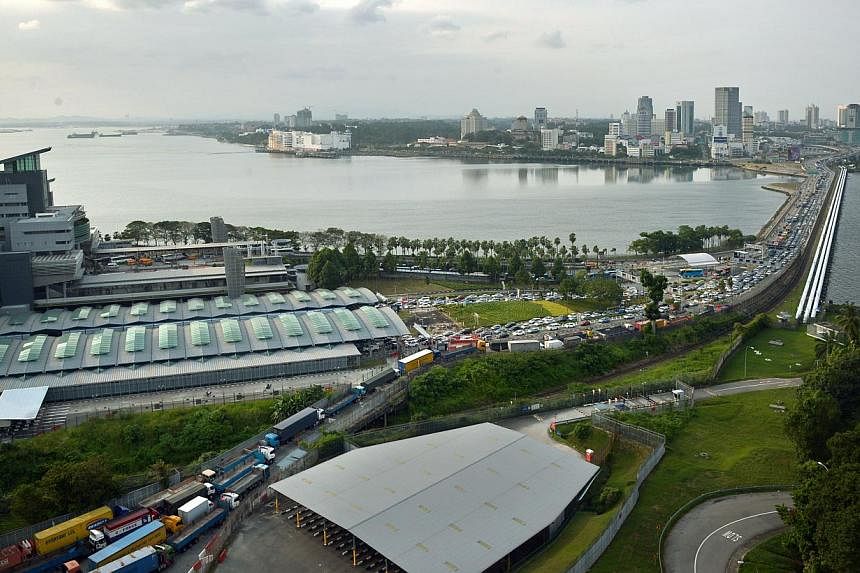ROBOTIC arms with biometric scanners for use by car drivers and passengers - security clearance could become a high-tech affair at Singapore's land checkpoints.
The Ministry of Home Affairs is looking to develop a new automated clearance system for vehicles aimed at "optimising clearance time", said tender documents put out this week.
The new system, which could take two to three years to roll out, is also aimed at "enhancing checkpoint clearance capacity" and "improving security processes and resource optimisation".
Currently, an officer at an immigration booth checks the passports of the driver and passengers.
Under the new system, drivers would have to disembark and manually scan the passports of all passengers in the car at a kiosk similar to the self-check-in stations at airports.
While that is done, an officer would count the number of people in the car, a figure verified by the automated system based on the scanned passports or by an automated vehicle occupancy counting system.
Once the initial checks are done, vehicles would move into another zone for "automated immigration self-clearance".
The system would then detect the number of passengers in the car and extend robotic arms with handheld biometric scanners to the vehicle's side windows.
Passengers would be prompted to reach out for the scanners to scan their fingerprints.
Cameras attached to the scanners would also perform facial detection of passengers.
In the event of any alarming detection, "security response forces" would be activated.
Called the Automated Passenger In-Car Clearance System, it can also determine the vehicles' registration numbers for screening and clearance records.
The system should have a clearance rate of 25 cars per hour, with a desired target rate of 30 cars per hour, said the tender documents.
It is not known what is the existing clearance rate at the two land checkpoints.
The tender closes in June.
It follows another tender last month calling for more automated counters at land checkpoints to allow motorcycle travellers to scan thumbprints and have passports verified by a machine.
This also comes after two separate checkpoint breaches last year, in which two Malaysians entered Singapore illegally via the Woodlands Checkpoint.
Last month, Deputy Prime Minister and Home Affairs Minister Teo Chee Hean laid out several measures to secure the Woodlands and Tuas checkpoints, including the installation of crash-resistant walls and fences that are difficult to climb.
Motorist Keith Toh, 30, a Malaysian engineer working in Singapore, welcomed biometric scanning as an added layer of security, but questioned the efficiency of the new clearance process.
"I'm a little sceptical of these new-fangled technologies. Will it mean longer waiting times and longer queues at the checkpoint?"

